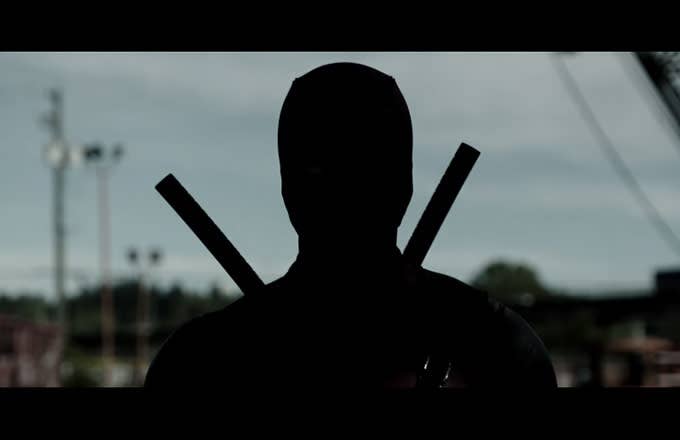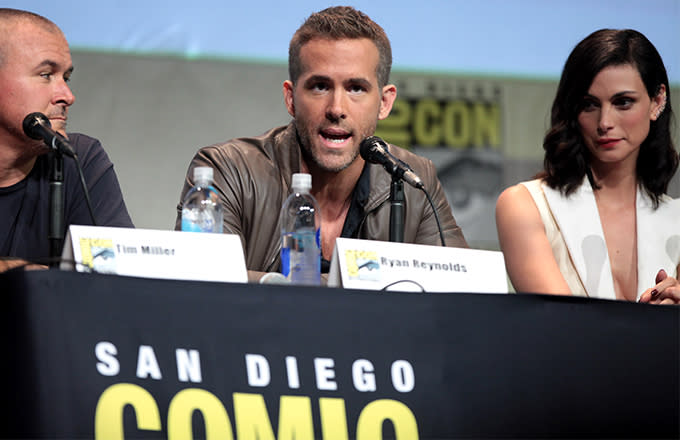
Congratulations. You clicked on a story about Deadpool. You are either a nerd or in love with Ryan Reynolds—or both. But, seriously, congratulations. You may be a hopeless fanboy, but you do have taste. Deadpool goes harder than any other superhero out there, and, from what we’ve seen in recently released film, his big moment on the big screen goes equally as hard. But, of course, you knew that, you Canada-loving geek, because you’ve been reading Deadpool comics for years. So how does the new movie stack up to the beloved comic book series? Let’s find out, shall we?

We finally got to see the Merc With A Mouth kick ass on the big screen on Feb. 12. About. Freaking. Time. And one of the things we need to be thankful for is that this movie stays true to its source material. This cannot be taken for granted; far too often, in the process of creating a blockbuster hit, a movie adaptation aims to please everyone, and thus, ironically pleases no one. Least pleased is the hardcore fanbase, which feels a sort of ownership over a character that they helped popularize and sustain.
This is also not the first time that Fox has portrayed Deadpool on film. Back in 2009, the studio released X-Men Origins: Wolverine, starring Hugh Jackman in the title role. Deadpool was a side character and eventual villain. The actor portraying Deadpool was Ryan Reynolds—the same Ryan Reynolds who’s performing the character in the new film.
But Origins’s Deadpool was bizarre, as though the screenwriters had never bothered to read the comics, and skimmed a Wikipedia entry instead. He looked like a Cenobite from Hellraiser. And what’s worse, the screenwriters sealed his mouth shut. It bears repeating; they took the Merc With A Mouth, the only superhero whose one-liners are his greatest weapon, and sealed his mouth shut.

The new filmmakers seem to have learned from their predecessors’ past mistakes, starting with the look of the character. No longer is Deadpool some bald, brainwashed multi-powered freak. Rather, he’s the hideously scarred, red-clad mercenary we’ve come to love.
There’s something refreshing about seeing a brightly colored superhero on film, isn’t there? Filmmakers have a thin line to walk. Do they stay completely faithful to the comic and create something garish and colorful, like Warren Beatty’s Dick Tracy? Or, do they go harder and try to make it grittier, like when they substituted Wolverine’s yellow spandex with black leather in X-Men? Deadpool, thankfully, went in the former direction. The character doesn’t take himself seriously, so why should the filmmakers?
Compared to Batman, who was first drawn nearly 80 years ago, and the X-Men, who debuted a little more than 50 years ago, Deadpool is a fairly young character, who made his first appearance in 1991. He’s not saddled with the sort of legacy and prestige that follows more classic superheroes. Every Batman story must begin with Bruce’s parents dying, in the same alleyway, no less. But Deadpool’s backstory is more up for grabs.
Partly, this is because Deadpool has not hit mainstream saturation; the average Joe is unfamiliar with him, which means that any minor reinvention of the character will not provoke unmitigated outrage. But this is also because Deadpool, by his very nature, is contrarian and chaotic. Deadpool is an outlier in the Marvel Universe, because he has the self-awareness to know that he is a fictional character. He breaks the fourth wall, talks to us as readers, and even peppers his dialogue with up-to-date pop culture references. Even Deadpool’s civilian name, Wade Wilson, is an inside reference to Deathstroke’s civilian name, Slade Wilson.
It’s a general maxim that’s held true for most of Deadpool’s comic run; the more his writers try and adhere to a sober internal logic, the more they run into the problems. The best Deadpool storylines are often the ones that are completely off the wall. How about the Marvel NOW! storyline that pits Deadpool against the Zombie American Presidents? How about the “Deadpool Kills Deadpool” storyline, where he takes on multiple reality versions of himself? Or how about the classic “Cable & Deadpool” storylines? In one of them, our favorite mercenary turns everyone’s skin blue—to promote world peace. None of this was ever supposed to “make sense.”

On some level, it must be a relief to a screenwriter—to realize that in Deadpool’s universe, there is no objective truth that must be told, lest the fans rebel. The comics have contradicted Deadpool’s origin story multiple times; they’ve alternately portrayed Deadpool as an impostor who killed Wade Wilson. The movie hits the basic beats, as told in Deadpool and Death Annual—Wilson is dying of cancer, joins the Weapon X program, and gains his superpowers, which also drives him mentally insane. How does Weasel factor into this? How does Vanessa/Copycat, Wilson’s girlfriend, factor into this? Is she going to be portrayed as a mutant or something else? And what connection will the filmmakers draw between Deadpool and Weapon X’s other famous graduate, Wolverine?
Changes are inevitable—it’s impossible to condense 25-odd years of backstory. But none of that matters at the end of the day, because whatever the movie lacks in canon accuracy, it makes up for in character accuracy. Throughout a six-year, fraught development cycle, one thing has always remained true—that Ryan Reynolds and director Tim Wilson want to respect the fans. So when you go out and see Deadpool, don’t worry so much about the minutiae and “accuracy.” Care less about the canon and more about the experience, with all the violence, gratuitousness, and dark humor that come with it. Deadpool the movie and Deadpool the comic no doubt diverge, but they’re similar in the ways that matter, and you can bet your last chimichanga on that.


